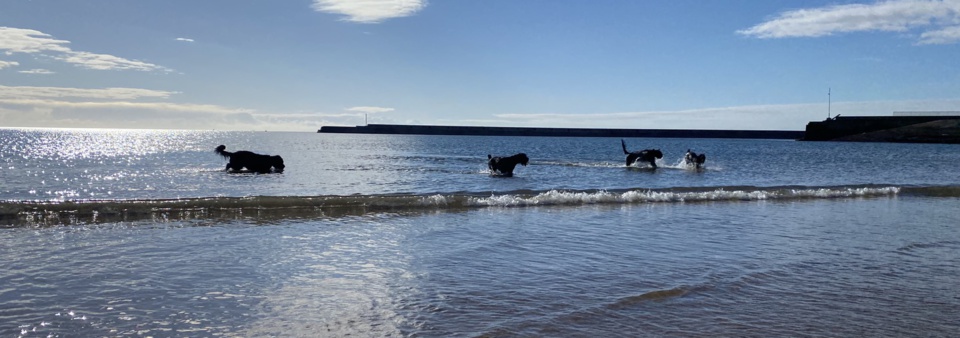
E-Collar Training and Use
I would like to dispel a couple of misconceptions about e-collars. Though controversial:
- Electronic collars are NOT for solving aggression or fear problems and as a general rule do not work with flighty, highly strung dogs. Nor are they just for "hard dogs".
- When used correctly, e-collars will not hurt a dog and should only be used on a setting which will get the dog's attention.
With the proper mentality on the handler's part, the softest dog can be trained with them as they should only be used on healthy, psychologically stable and generally obedient adult dogs.
E-collars are used to extinguish a specific behaviour or to finish off a command, to install that total obedience to a command. They are a training tool, not a 'magic bullet' solution to all training problems.
If you decide to use one of my Dogtra collars I recommend that you not refer to it as a "shock collar". The very name sends some people into paroxysms of fear. "How can you be so cruel to shock your dog!!!" Call it instead a remote training collar or even an electronic collar. Yes, I know its a euphemism but it may also help you think about it another way.
Before I go further into this topic, let me explain what the stimulation is like.
Have you have ever dragged your shoes across a carpet and then reached for a doorknob and gotten a shock? Well, you would have received the sort of stimulation that comes from the highest setting of e-collars. It is unpleasant but does no physical damage and I have never had to use the highest setting, ever! I have given myself hundreds of shocks from the collars in demonstrating them and insist that clients receive stimulations from the collars as well before using them on their dogs.
Most trainers use the E-collar as a negative, punishment only tool:
- The dog chases deer so they put the collar on the dog and the next time he starts chasing deer, they blast him with a high level jolt of electricity. He learns that chasing deer leads to an unpleasant experience, no matter how far he is from his handler, and the behaviour becomes extinct. Actually this has two parts, the first part, when the button is pressed to give the dog a stimulation, is punishment. The second part, when the dog breaks off the chase and the stimulation is stopped, is positive reinforcement.
- In another situation a dog knocks over the bins and eats the rubbish. The handler puts a collar on him and next time he approaches the bin the handler gives the dog a high-energy jolt of electricity. In this case the dog is conditioned that the bin is hot and shocks him when he approaches it. He learns that approaching bins is an unpleasant experience.
These behaviours cease with or without the presence of the handler because the dog believes that the correction came from his behaviour, not from the handler. He believes that his action of chasing the deer or approaching the trash can caused the electronic stimulation. These are examples of simple avoidance behaviour training and are the extent of most trainers' uses of these collars.
One problem that occurs with this use of the collar is that most trainers stimulate the dog a few times and then put the collar away. The dog quickly learns that the stimulation is linked to the collar and that he can chase deer or eat rubbish when the collar is not on. The dog has become 'collar-wise'. Also, in the case of livestock worrying, the only thing the dog has been taught is "if I chase and get too close, it hurts". I want to teach the dog not to want to chase at all; this is easier than you think and is less stressful on the dog in the long run.
